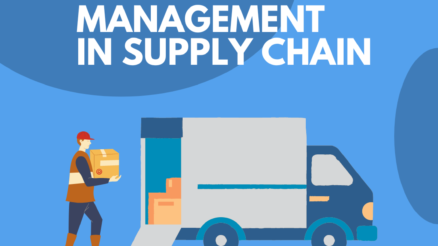Organizational change is a constant challenge for companies in today’s ever-changing global economy.
Organizational change involves implementing an innovative process, introducing cutting-edge technology, creating a new team structure or merging into another business entity.
But what types of organizational change should you be aware of?
In this blog post, we’ll outline the 12 most common types of organizational change that managers and professionals need to know about—and how they can help drive company growth and success.
Let’s start reading
1. Transformational Change
Transformational change is a type of organizational change that seeks to create significant, fundamental shifts in how an organization operates and organizes itself. This type of change involves introducing new strategies, processes, systems, and structures that shift the way the company operates.
Transformational change is typically considered as more radical because it can involve overhauling existing operations or introducing larger, systemic solutions that may span across multiple departments. This type of organizational change requires a deep level of commitment from leaders and employees alike, as it often requires them to let go of traditional ways of doing things in order to embrace new systems and procedures.
2. Incremental Change
Incremental change is a type of organizational change that introduces small, but meaningful changes to an organization’s systems, processes, and structures. This type of change is often seen as the opposite of transformational change, as it involves making gradual, iterative adjustments to existing operations rather than embarking on a complete overhaul.
Incremental change is a type of organizational change that can help businesses increase their efficiency and effectiveness. Unlike transformational change, incremental change focuses on small, targeted adjustments instead of large-scale overhauls. This type of change typically involves making small improvements and modifications to existing systems, processes, and structures in order to maximize productivity and output.
3. Developmental Change
Developmental change is a type of organizational change that seeks to build on the existing processes, structures, and capabilities of an organization in order to bring about meaningful improvements. This type of change typically involves introducing new systems, technologies, and tools that enable greater efficiency and effectiveness in the workplace.
Unlike transformational and incremental changes which often require a complete overhaul of existing operations, developmental change focuses on building upon existing systems, processes, and structures to bring about meaningful improvements. This type of organizational change involves introducing new tools and technologies that help employees become more productive and efficient.
4. Remedial Change
Remedial change is a type of organizational change that involves making corrections or improvements to existing systems, processes and structures in order to bring about more efficient and effective operations. This type of change often involves troubleshooting and problem-solving existing issues as well as implementing strategies that can help simplify procedures and eliminate areas of inefficiency.
Unlike transformational and developmental changes which focus on introducing new strategies and technologies to drive growth, remedial change focuses on addressing existing problems in order to make operations more efficient and effective.
5. Process and System Change
Process and system change is a type of organizational change that involves making adjustments to existing processes and systems in order to improve efficiency and effectiveness. This type of change often involves the introduction of new technologies, systems, and tools that not only make operations more efficient but also introduce new ways of working.
Process and system change can help businesses increase their efficiency and effectiveness by introducing new technologies, systems, and tools that enable greater efficiency and productivity in the workplace.
6. People and Culture Change
People and culture change is a type of organizational change that focuses on transforming an organization’s culture, values, and behaviors in order to drive greater efficiency and effectiveness. This type of change often involves introducing new corporate policies, procedures, and systems that help to create an environment where employees feel supported, valued, and empowered.
Additionally, these changes often involve incentivizing employees to make the changes they need to ensure the organization operates at peak efficiency. Through organizational change management, leaders are able to create a culture of engagement, innovation, and collaboration.
This can be done through providing training and education opportunities for employees so they can better understand the changes being implemented and how it will benefit them.
7. Structural Change
Structural change is a type of organizational change that alters the way an organization is structured in order to improve efficiency and effectiveness. This type of change often involves introducing new policies, procedures, and systems that help to streamline operations and eliminate areas of waste.
Additionally, structural change often involves re-organizing departments and teams in order to better align the organization’s goals, objectives, and strategies. This type of organizational change seeks to increase effectiveness by restructuring the organization’s hierarchy in order to streamline operations and create a more cohesive team structure.
Structural change can also involve introducing new job roles and adjusting existing ones. By introducing new job roles, organizations are able to better allocate resources and ensure that the right people with the right skillsets are in the right positions.
8. Merger and Acquisition Change
Merger and acquisition change is a type of organizational change that involves the merging or acquisition of two or more businesses. This type of change often involves combining resources, personnel, and operations from multiple organizations into one.
Mergers and acquisitions (M&A) can be used as a strategy to drive growth and expansion for a business. M&As are a common form of organizational change in which two or more businesses combine their resources, personnel, and operations into one organization. This type of change often involves combining the strengths of each company to create a stronger organization.
9. De-merger change
De-merger change is a type of organizational change that involves the splitting of an organization into two or more separate entities. This type of organizational change is often used when an organization has grown too large, and there is a need to streamline operations and simplify structures in order to improve efficiency.
De-merger change is a type of organizational change that seeks to break up an organization into smaller parts, in order to allow it to become more agile and efficient. It involves the separation of business units, departments, or other parts into distinct entities, while still maintaining some degree of organizational control and integration.
10. Downsizing Change
Downsizing change is a type of organizational change that involves reducing the size of an organization. This type of change often involves cutting costs and reducing personnel in order to achieve greater efficiency and productivity. Downsizing can be used as a strategic measure when an organization needs to focus its resources on core operations or when the organization has become too large for its current structure and size.
11. Relocation Change
Relocation change is a type of organizational change that involves the moving of an organization or parts of it to a new location. This could be the physical relocation of staff, offices, and departments or the transfer of operations to another jurisdiction or country.
Relocation changes can be complex, but they often offer numerous benefits to organizations that choose to implement them. By transferring operations to a new location, organizations are able to consolidate operations, reduce overhead costs and improve the efficiency of their processes.
In addition to cost savings, relocating an organization can also provide access to new markets and customer bases, as well as a local competitive advantage. This type of change allows businesses to take advantage of new opportunities in different geographic regions, cultures, and countries.
12. Rebranding Change
Rebranding change is an important type of organizational change that involves making modifications to the organization’s brand or public image, in order to create a more compelling and attractive image. This type of change can be triggered by a variety of different factors, including changes in the marketplace, shifts in customer preferences, and external influences.
Organizations often feel the need to rebrand after going through a merger or acquisition. Merging two companies can create a new entity with a different set of assets, capabilities, and positioning in the marketplace. Rebranding allows organizations to leverage those changes to create a unique identity that will differentiate them from competitors and attract customers.
Final Words
As you can see, there are a wide variety of organisational changes that businesses go through. And each type comes with its own advantages and disadvantages. It’s important to weigh up all the factors before embarking on any kind of change in your business – whether it’s big or small. What type of change is your organisation going through at the moment? How do you think it will affect your business in the long run?



